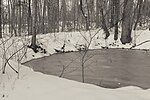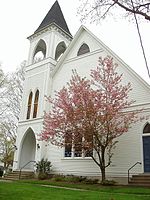Westville Village Historic District
Federal architecture in ConnecticutGreek Revival architecture in ConnecticutHistoric districts in New Haven, ConnecticutHistoric districts on the National Register of Historic Places in ConnecticutNRHP infobox with nocat ... and 1 more
National Register of Historic Places in New Haven, Connecticut

Westville Village Historic District is a historic district representing most of the commercial center of the Westville neighborhood of New Haven, Connecticut. This center developed in the 19th century as an industrial mill village distinct from the city center, and retains many architectural features of that period. The district was listed on the National Register of Historic Places in 2003, and its boundaries were increased slightly in 2006.
Excerpt from the Wikipedia article Westville Village Historic District (License: CC BY-SA 3.0, Authors, Images).Westville Village Historic District
Walnut Tree Hill Road,
Geographical coordinates (GPS) Address Nearby Places Show on map
Geographical coordinates (GPS)
| Latitude | Longitude |
|---|---|
| N 41.330555555556 ° | E -73.172222222222 ° |
Address
Walnut Tree Hill Road
Walnut Tree Hill Road
06484
United States
Open on Google Maps






